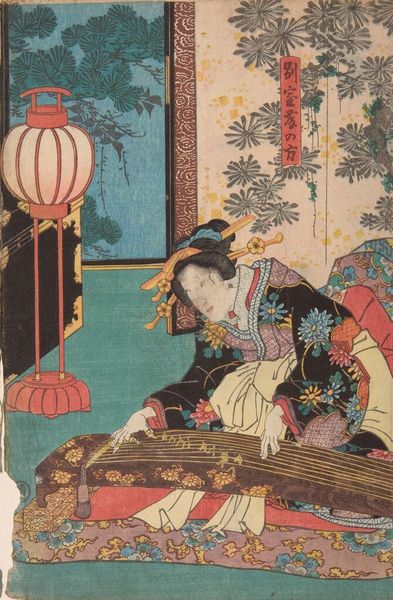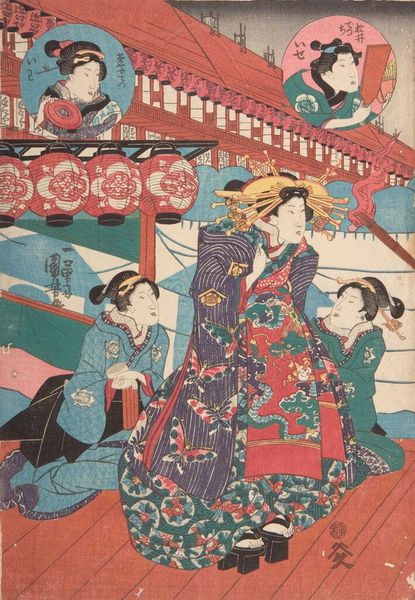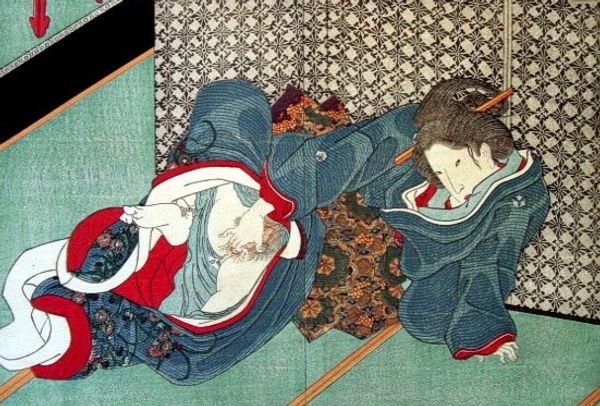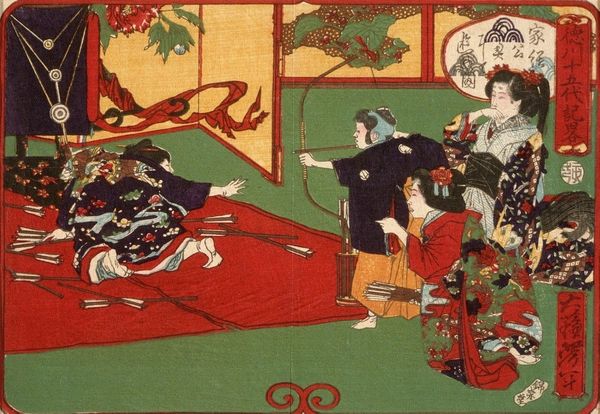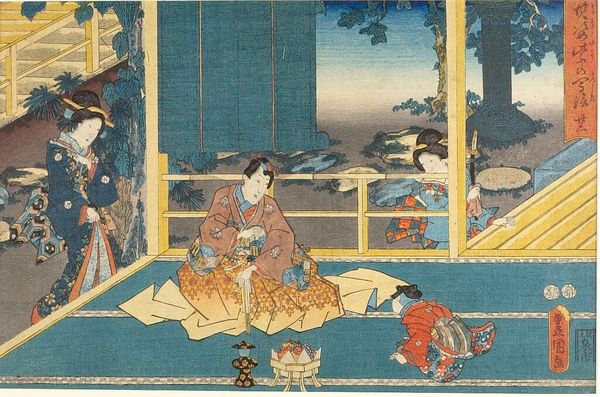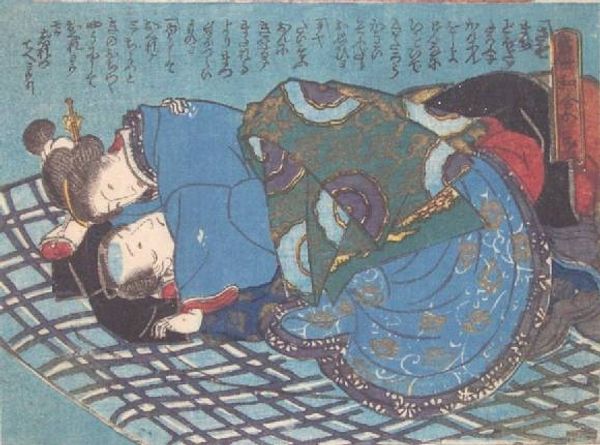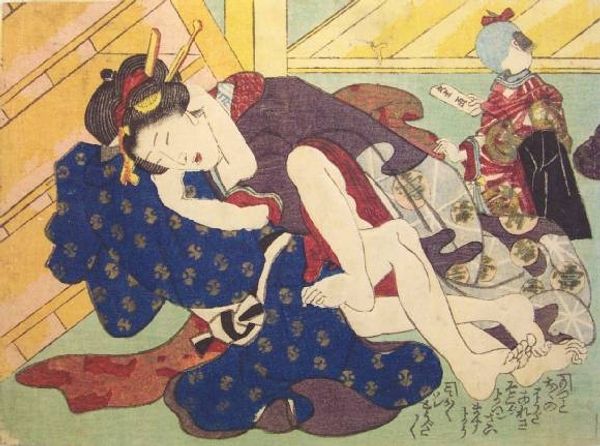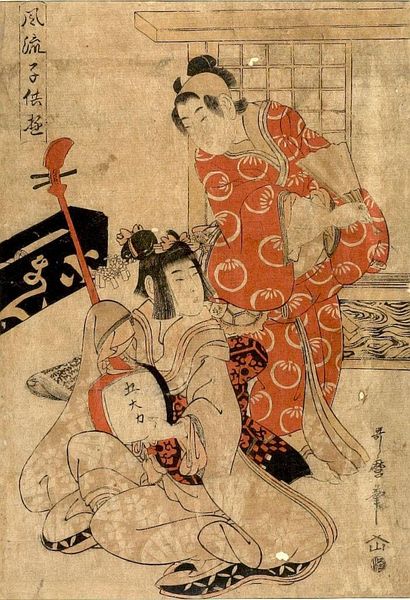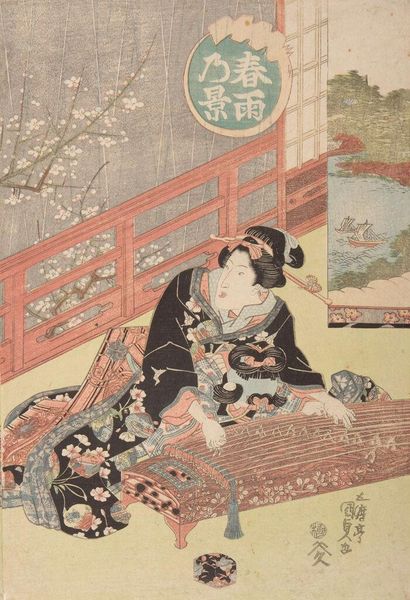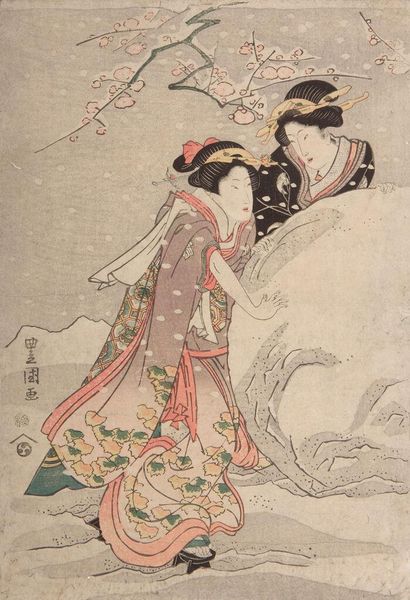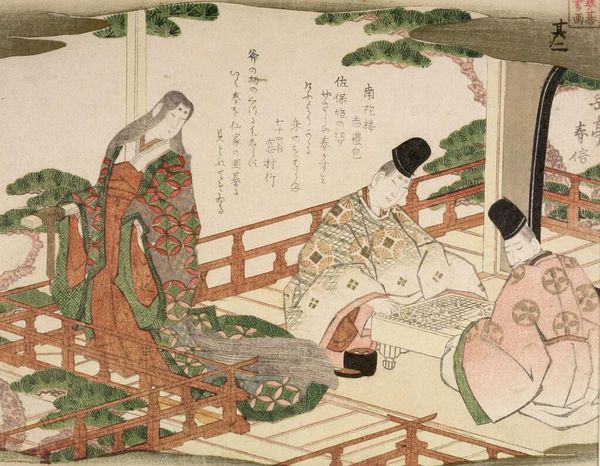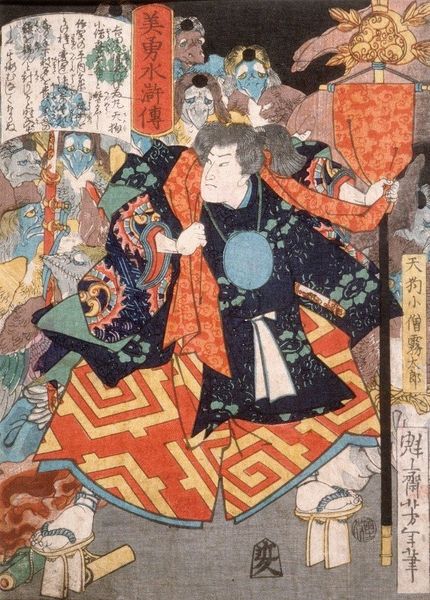
Shunga Scroll 1838
print, textile, ink, woodblock-print
#
portrait
#
water colours
#
ink painting
# print
#
asian-art
#
textile
#
ukiyo-e
#
ink
#
woodblock-print
#
naive art
#
genre-painting
#
erotic-art
Copyright: Public domain
Keisai Eisen created this Shunga Scroll using woodblock print in 19th-century Japan. Shunga, which translates to “picture of spring”, is a Japanese term for erotic art. But these works were about more than just sex: they provided instruction, and could comment on the social structures of the time. Japanese society was highly regulated, with rigid social hierarchies. Woodblock prints were a popular art form, relatively cheap and accessible. They depict scenes from everyday life, landscapes, and popular culture. But Shunga prints allowed artists to explore themes of sexuality and desire, often in a humorous or satirical way. Studying Shunga prints involves researching the social and cultural context of the Edo period. We can better understand the nuances of these images by looking into the class system, gender roles, and artistic conventions of the time. The meaning of art is always shaped by its social and institutional context, and the work of the art historian is to bring these contexts to light.
Comments
No comments
Be the first to comment and join the conversation on the ultimate creative platform.
